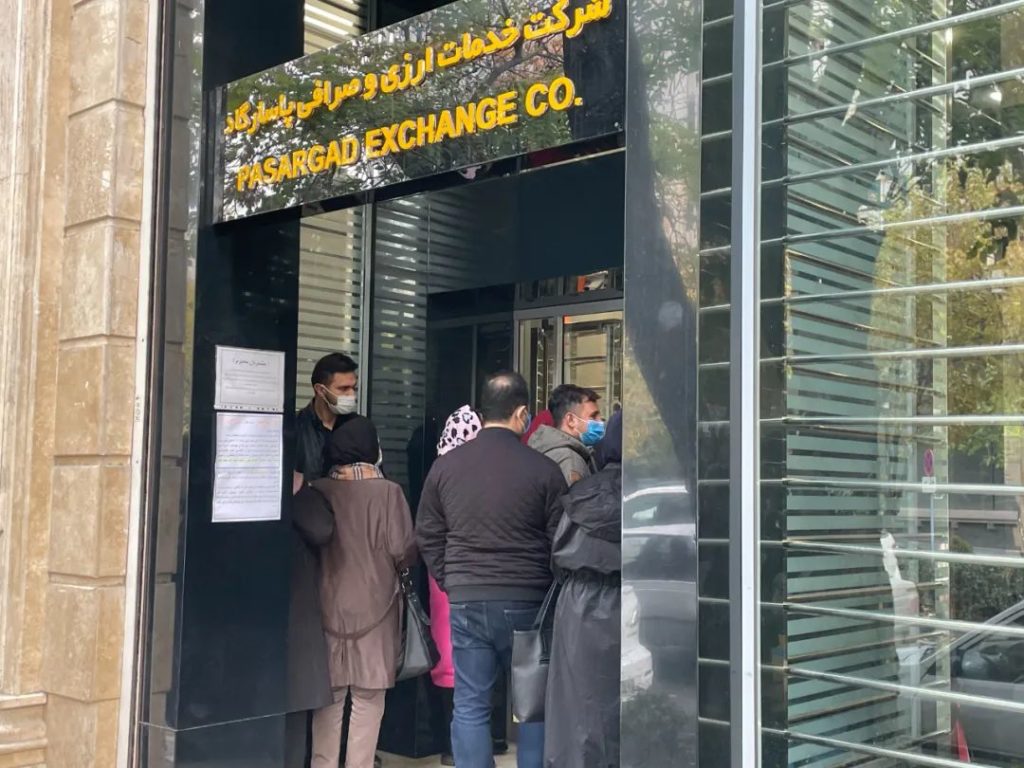The weather in Tehran, the capital of Iran, is getting colder. The reporter saw that a little boy was wearing a red sportswear, holding a plastic water bottle in one hand and a car wash brush in the other. He was trying to stand on tiptoe. His entire upper body was almost close to the windshield of the car and scrubbing hard. When he finished his work, he straightened up, turned to the other side to ask the driver for compensation, and looked at the top of his head that was still one end away from the roof of the car.
According to the current “market”, this order can bring tens of thousands of rials to the little boy. However, considering the price level, you can only buy a bottle of milk at most. There are not many “lucky moments” to make money. More often, the car owner waved his hand and refused, or he patted the window after washing the car but asked for money in vain.
On the same day, on the street of Tehran, the reporter also saw a middle-aged man holding a handful of roses and selling them in the traffic, but the response to waving his hand and shaking his head accounted for the majority. A rose can’t tolerate impulsive consumption.
Such scenes are quite common on the streets of Tehran. In recent years, especially under the unilateral withdrawal of the U.S. government from the Iran nuclear agreement and the increased sanctions against Iran, the Iranian economy has been severely hit and the Iranian people have been overwhelmed.
After the U.S. government unilaterally withdrew from the Iran nuclear agreement in 2018, it fully restarted sanctions against Iran, involving Iran’s oil trade, shipping, finance and other fields. You should know that exports of oil and minerals are the most important source of foreign exchange earnings for Iran. Financial sanctions have made it almost impossible for Iranian financial institutions to carry out cross-border dollar operations, and exports of commodities such as oil must not be traded in US dollars. The United States continues to wave the stick of sanctions, Iran’s domestic price level and unemployment rate have risen together, and the currency has depreciated “cliffy”.

Some data are enough to reflect the difficulties of Iran’s livelihood: Iran’s inflation rate is currently high as high as more than 45%. In the 12 months as of June this year, Iranian prices rose by about 43%, of which food prices rose by more than 60%. About one-third of the households in the country live below the poverty line. The unemployment rate of the 18-35-year-old group in Iran reached 17.6%.
At present, the open market exchange rate of riyal against the US dollar has fallen below 270000:1. Before the United States withdrew from the Iran nuclear agreement and restarted sanctions, the exchange rate was 32000:1.
Conditional families usually seize the right time to exchange their savings into tight US dollars or other foreign currencies to avoid shrinking wealth. Whenever the exchange rate plummets and prices rise sharply, the currency exchange office is particularly lively, with long queues at the door of only a few square meters to more than ten square meters.

What’s more, even under the impact of the coronavirus epidemic, the United States refused to loosen the “hands” of sanctions. Iran’s import of drugs, vaccines and other epidemic prevention materials once encountered great obstacles, and hospitals lacked doctors and medicines.

Analysts said that the U.S. government intends to exert extreme pressure on Iran to “promote change”, force the Iranian authorities to compromise, or induce chaos in Iran due to serious economic difficulties.
“The United States said that it attached importance to human rights, but used sanctions to put pressure on innocent people in other countries, hurt their country, hindered their development, and deprived their children of the future. This is obviously an anti-human rights act.” Hao Matt, director of the Asian Research Center of the University of Tehran in Iran, said.
Lifting sanctions is undoubtedly the key word for Iran’s negotiating demands. After more than 5 months of stagnation, the parties to the Iran nuclear agreement will hold a new round of negotiations on the resumption of U.S. and Iran’s compliance in Vienna, Austria, on the 29th. Analysts pointed out that at present, the Iranian government is more willing to negotiate to mitigate the impact of Western sanctions on the Iranian economy, but because Iran and the United States still have major contradictions on some key issues, the prospects for this round of negotiations are not optimistic.
Speaking of the latest round of negotiations, some Iranian friends told reporters that they hope that the early lifting of sanctions will make life easier, but they dare not expect anything from the United States, because the greater the hope, the greater the disappointment. On the eve of the resumption of negotiations, there was another wave of currency depreciation in Iran, perhaps revealing this “dare not to hope” mood?
Sportswear and roses, these two red colors in Tehran, do not mean romance, but epitome of Iranians carrying sanctions to continue to live.



